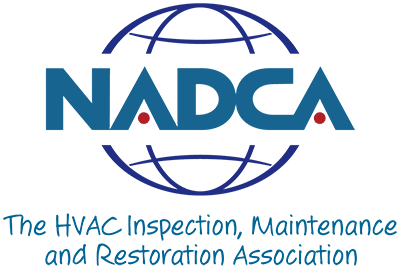 Though two-thirds of the earth is covered by water, if you’re especially concerned about that portion that comes to your house, home water treatment is a vital issue. See how the numbers make fresh, clean water actually a statistical rarity: Of that two-thirds of liquid covering the planet, only 2.8 percent is fresh water. Seventy percent of that amount is what’s known as utility water for uses like irrigation; its quality is not monitored or controlled. Some 28 percent is called working water suitable for bathing and laundry. That leaves just 2 percent of the earth’s fresh water – or 0.3 percent of the total water on the planet – that is potable water safe for drinking and cooking.
Though two-thirds of the earth is covered by water, if you’re especially concerned about that portion that comes to your house, home water treatment is a vital issue. See how the numbers make fresh, clean water actually a statistical rarity: Of that two-thirds of liquid covering the planet, only 2.8 percent is fresh water. Seventy percent of that amount is what’s known as utility water for uses like irrigation; its quality is not monitored or controlled. Some 28 percent is called working water suitable for bathing and laundry. That leaves just 2 percent of the earth’s fresh water – or 0.3 percent of the total water on the planet – that is potable water safe for drinking and cooking.
Water is the universal solvent. Water dissolves almost anything and carries away a bit of almost everything it touches. When the world was a more natural, pristine environment, water picked up mostly only natural minerals and naturally occurring bacteria. Today, even a raindrop falling from the sky picks up chemical pollutants and toxic particulates that didn’t exist in the past. Manmade substances in the soil are also dissolved by water. That same raindrop merges with millions of others, flows into a river, forms a lake or seeps into the ground to feed an underground aquifer, eventually winding up in your municipal water supply. By this point, the accumulation of contaminants and pollutants collected along the way may be significant. Filtration provided by your local water utility takes out some of the toxins and impurities, but when it comes to the health of your family, how much is enough? That’s when homeowners start thinking about home water treatment.
Municipalities do a good job of treating water, particularly when it comes to reducing biohazards from water-borne microorganisms. They’re also able to remove most contaminants down to a certain level. While most pollutants that escape treatment at a municipal water facility are not present in your household water at concentrations sufficient to trigger acute health crises, much less is known about the chronic, day-in-day-out exposure from long-term ingestion of “permissible” low levels of contaminants.
How Little Is Too Much?
The U.S. Environmental Protection Agency sets standards for amounts of common contaminants in drinking water. It’s important to note that these requirements restrict allowable amounts; they do not totally prohibit any presence of these pollutants. So, while you may not be getting a dose sufficient to cause immediate illness, over the long term you can count on the fact that you’re getting exposure to at least some of these toxins:
- Microbes. Living microorganisms in municipal water may include fecal coliform and e-coli, both of which result from human or animal wastes and are associated with intestinal illness. Cryptosporidium is very resistant to chlorine disinfection commonly used by municipal water treatment facilities and also causes gastrointestinal distress that can be particularly dangerous in individuals with compromised immune systems.
- Inorganics and heavy metals. Substances like mercury, lead and copper may be spread into water by man-made sources. Others, like arsenic, may be naturally occurring. Exposure to these contaminants can cause immune disorders, cognitive problems and birth defects. Children are especially vulnerable. The U.S. EPA has stringent standards for permissible levels of these dangerous pollutants in your drinking water, but they are not zero.
- Volatile organic compounds (VOCs). This category is a laundry list of man-made chemicals including benzene, carbon tetrachloride and trichloroethylene. Formaldehyde is another widespread VOC. Long-term exposure to these non-naturally occurring chemicals has been linked to higher rates of cancer and birth defects, as well as other chronic illnesses.
- Disinfectants. The same substance used to sanitize water, chlorine, may react with naturally occurring substances in the water to form secondary substances such as trihalomethanes and bromate. Exposure in amounts above EPA standards may cause illnesses.
Types of Home Water Treatment
Home water treatment options for Sarasota or Bradenton residents who want to do better than the EPA-recommended level of water quality are divided into two general groups:
Point of entry. Also known as “whole house” filtration, these systems filter all the water flowing into the house from your main water supply line. Sometimes incorporated into a water softening system, point-of-entry filtration equipment is usually installed in the garage or basement. They may utilize a variety of filter media including cartridges and stand-up tank-type filters. Point-of-entry systems are designed to filter large volumes of water to an acceptable, “all purpose” health standard. However, they generally do not deliver the highest filtration available from current technology.
Point of use. This method filters only the water you will drink, cook with, or use for bathing. A point-of-use (POU) system is more compact and generally installed under a kitchen or bathroom sink. They handle smaller volumes of water ranging from 20 to 100 gallons per day. Because of the lower demand, POU systems filter to a much purer standard that POE filtration. In addition to basic sediment removal, most utilize reverse osmosis filtration, considered the gold standard for healthy household water. Reverse osmosis filters out 99 percent of contaminants such as arsenic, lead, chlorine, sulfates, volatile organic compounds, rust, sediment and others. It also removes odors. The water quality of reverse osmosis is considered to be equal or superior to most bottled water, but also much more economical on a per-gallon basis as well as environmentally friendly.
Why Reverse Osmosis Works
Recognized by the federal EPA and Centers For Disease Control and Prevention, the reverse osmosis process filters water to a much higher standard than conventional carbon filters, whose main purpose is to remove chlorine and make water smell and look better. Composed of a pre-filter, a filtration membrane and a post-filter, reverse osmosis uses the home water pressure to force water through an extra-fine membrane, filter out contaminants, then divert the filtered contaminants down a drain. Since the process is slow, the purified water is channeled into a storage tank so several gallons of pure water will always be ready to be dispensed. The purity resulting from reverse osmosis approaches the standard for distilled water, yet it can be produced in less time without electricity consumption.
Components Of A Reverse Osmosis Filtration System
All parts of an RO home water treatment system are installed underneath the sink or some other centralized location in the kitchen or bathroom.
- Pre-filter. After water is diverted from the cold water supply line at a valve installed in the line, the water enters the pre-filter. Its purpose is to remove silt, sand, dirt and other forms of sediment. There may be more than one pre-filter in an RO system; a standard carbon filter may also be incorporated to remove chlorine.
- Reverse osmosis membrane. The primary filtration media, the most common type is a spiral-wound variety that is available in two options: cellulose triacetate (CTA), which is not affected by chlorine in the water, or thin film composite/thin film material (TFC/TFM), which is vulnerable to the effects of chlorine and must be utilized in conjunction with a carbon pre-filter.
- Flow restrictor. Located in the system drain line tubing, the rate of water flowing through the reverse osmosis filter is controlled by this device. It’s an important component because the proper flow rate maintains optimum pressure on the filter membrane and produces the highest quality of filtration.
- Storage tank. After filtration, pure water flows into this tank for ready usage at the faucet. Most home RO storage tanks contain up to 2.5 gallons of water. Inside the tank, an air-filled bladder maintains water pressure.
- Post filter. Water leaving the storage tank first passes through the post filter before being dispensed at the faucet. In most RO systems, the post filter is either carbon granules or a carbon block. The system may incorporate more than a single post filter.
- Faucet. A reverse osmosis home water treatment system utilizes a separate “pure water” faucet installed in the sink, distinct from the standard water faucet.
- Drain line. Impurities removed from the water by the reverse osmosis process are diverted into the drain line. The drain line extends from the outlet side of the RO membrane to a fitting installed into the household drain pipe.
If the household demands for pure water change at a specific sink installation, the output of the reverse osmosis home water treatment system can be increased to accommodate the new demand. A higher-flow RO membrane will improve the system’s “recovery rate,” the time required to fill the storage tank. This reduces the possibility of temporarily running short of filtered water during high demand or when extra uses – such as an ice maker – are added to the system. Upgrading to a high-flow membrane will not affect the quality of filtration or the purity of water.
For more information on the right home water treatment system to provide healthy water to your family, or to learn more about complimentary water analyzing to see what you’re drinking now, contact the water quality professionals at Aqua Plumbing & Air.


















